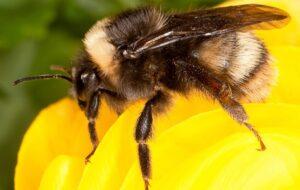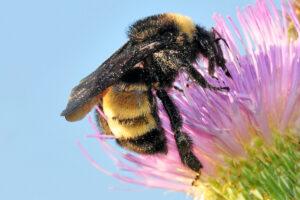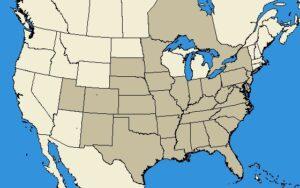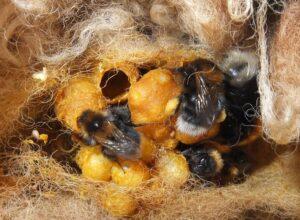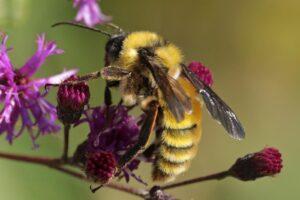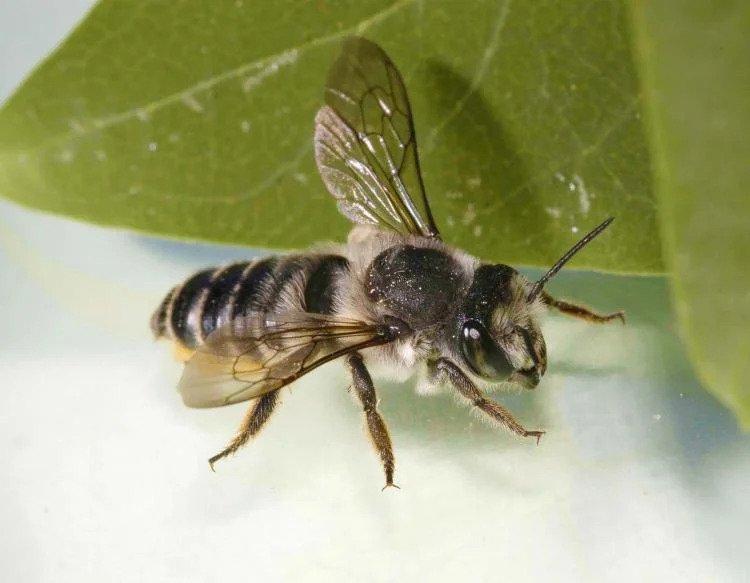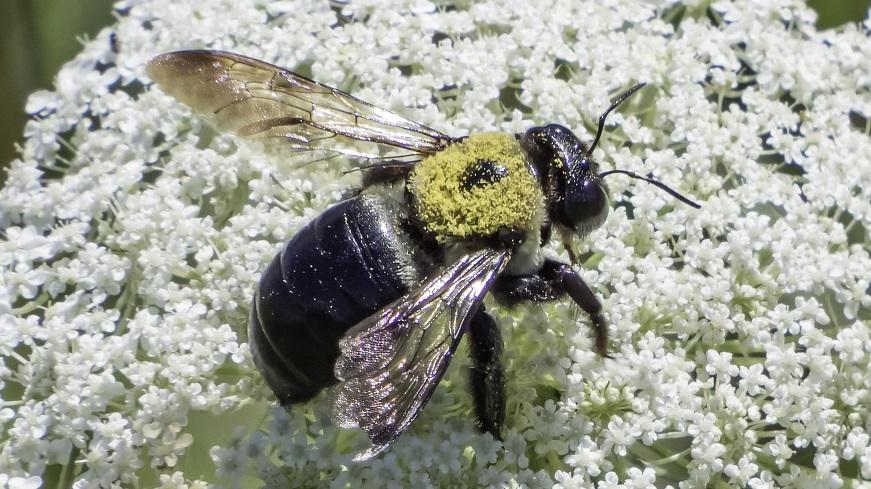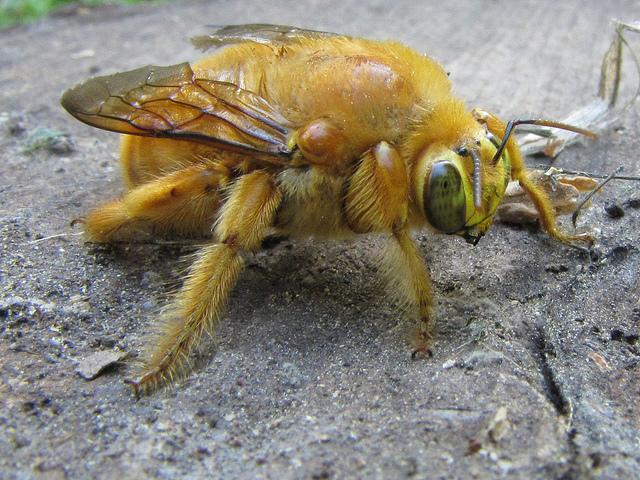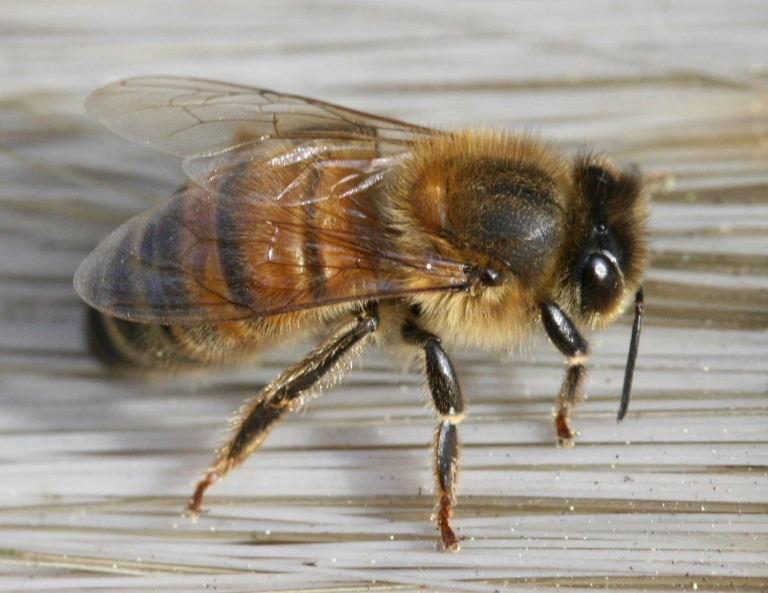American Bumble Bee (Bombus pensylvanicus)
Updated on
17/11/2022The American bumble bee is an endangered species native to North America. It comes from the family of cuckoo bees, honey bees, and carpenter bees. A vital pollinator for crops and wildflowers, population decline in these bees causes a threat to the environment. Their populations have drastically declined over the years, and they are at constant threat of possible extinction.
Scientific Classification
- Class:Insecta
- Order:Hymenoptera
- Family:Apidae
- Genus:Bombus
- Subgenus:Thoracobombus
- Subspecies:B. pensylvanicus
Conservation Status
Description
In size, queen bees are larger; 0.86-1.023 in. (22-26mm) as compared to males, which are about 0.62-0.86 in. (16-22mm); and worker bees 0.51-0.74 inches (13-19mm).
Some common characteristics among all members of American bumble bees are a black thorax and entirely yellow – second and third abdominal segments. They all have long faces and black tails.
They also have short black hair surrounding their abdomen, base of the wings, around their face, and the upper side of their head.
The morphological features of these bees vary among different geographical locations. These features though similar in some cases- like between B. pensylvanicus and B. sonorus, still bring about differences in male genitalia and color variations.
Distribution: Eastern Great Plains to eastern and central U.S. and southern Canada (Alberta, Ontario, Quebec), Desert West, California, Oregon, and Mexico
Habitat: Open farmlands, fields, tallgrass, prairie patches. Their nests are also sometimes found in barns and buckets.
Do They Bite/Sting: No, they don’t sting though a stinger is present. They hardly notice humans/animals unless disturbed.
Predators: Bears, skunks, raccoons, crab spiders, wasps, assassin bugs, dragonflies.
Behavior and Characteristics
Dominance
Depending on the season and colony strength, there are shifts in the hierarchy among colony members.
Initially, queen bumble bees, the largest, are involved in foraging and are the dominant members. Food is scarce while the queen undertakes foraging. Worker populations are low, and they have shorter wing lengths.
With an increase in worker strength and development in males, there is a change in dominance status in the colony. Foraging responsibilities change, leading to an abundance of food. The size of male bees increases dramatically, resulting in lesser queen bee populations. The worker bees show dominance during this period, which happens by July.
This order changes when the males start to develop and reach the size of females. By November-December, the worker bee population is almost finished.
As host to parasitoids
Flies are common parasites of American bumble bees. Flies attach themselves to bees and lay eggs between the dorsal plates of the bee. After hatching, the larvae feed on the bee’s internal organs for about two weeks until the bee dies. The fly then pupates and spends the winter inside the bee, fully developed.
In some cases, sterilization of queen bees is caused by a nematode worm called Sphaerularia bombi, which significantly impacts the colony.
Parasitic microorganisms like- tracheal mites, protozoans, and fungi consume the internal organs of the bees and reduce their lifespan.
Some bumble bees develop symbiotic bacteria, which provide immunity against pathogens.
As pollinators
Studies have shown that the American bumble bee prefers a wide variety of flower types rather than prioritizing only one kind of flower. These bees are meticulous pollinators who follow a wide variety of foraging patterns.
Like other bees, they also follow buzz-pollination by creating a loud buzzing noise with a high pitch. This pollination helps extract the pollen in some flowers that hide the pollen sacks in their anthers.
They also use their long tongues to collect nectar. They also utilize some of this nectar to make honey and store it in honey pots.
The American bumble bees are beneficial and effective pollinators. They help to pollinate crops and gardens and help nourish ecosystems.
Mating and reproduction
Queen American bumble bees reproduce sexually and asexually, producing different colony members.
Fertilized eggs hatch into future queen bees or workers. Adult queen bees also lay eggs without mating through an asexual process called haplodiploidy. These eggs hatch to form males of the colony.
Young adult queen bees search for nesting sites after mating with a male bee. The mating season usually happens around July to August. They remain in a period of hibernation up to spring, after which they start collecting nectar and pollen, a source of nutrition for the females, and start building a colony.
Life Cycle
After the establishment of the colony, the queen bee creates eggs by utilizing the pollen and initiating the stimulation of their ovaries. The males in the previous year had already fertilized these eggs.
Female worker bees assist the queen in keeping the eggs warm and protecting the nest. To protect the nest from predators and non-members of the colony, bees develop different color patterns around its most dangerous weapon – its sting.
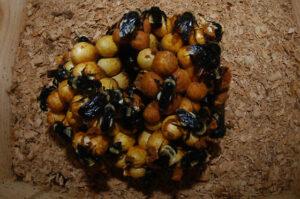
This change of color pattern is a case of a species applying Müllerian mimicry. In this technique, the individual uses color patterns and other characteristic body color developments to warn other predators about the spines or stings it may use to defend itself.
After hatching, the young bees take about 4-5 weeks to metamorphose into adults female workers.
Then the queen bee produces a unique chemical that prevents oogenesis or gamete formation amongst female worker bees. The queen takes this step to produce eggs that develop into queen bees and males selectively.
An ongoing battle between the queen and female worker bees persists late into summer. The queen bees destroy any eggs laid by female worker bees to maintain their position and control the colony population.
Finally, the female workers sting the queen to death, upon which the life cycle begins again after successive deaths of the old workers.
Population Decline and Conservation
This bumble bee was once the most abundant species in the southern United States. Parasitic attacks, mite infestations, rapid habitat loss, and pesticides have resulted in a rapid decline in populations of the American bumble bee. Losses of genetic diversity in the species are also a factor in their” decline.
In the state of Pennsylvania, from where the bee gets its scientific name, its numbers are considered critically low.
A significant loss in the American bumble bee population has been witnessed since the start of the century, with only 10% of its population available in the present times.
The American bumble bee has disappeared from U.S. states such as North Dakota, Maine, New Hampshire, Oregon, Rhode Island, Idaho, Wyoming, and Vermont. In New York, the species has shown a 99% decline in population.
Source
static.foxnews.com, bugguide.net, live.staticflickr.com, bumblebeeconservation.org, cdn.birdseye.photo, static.onecms.io




